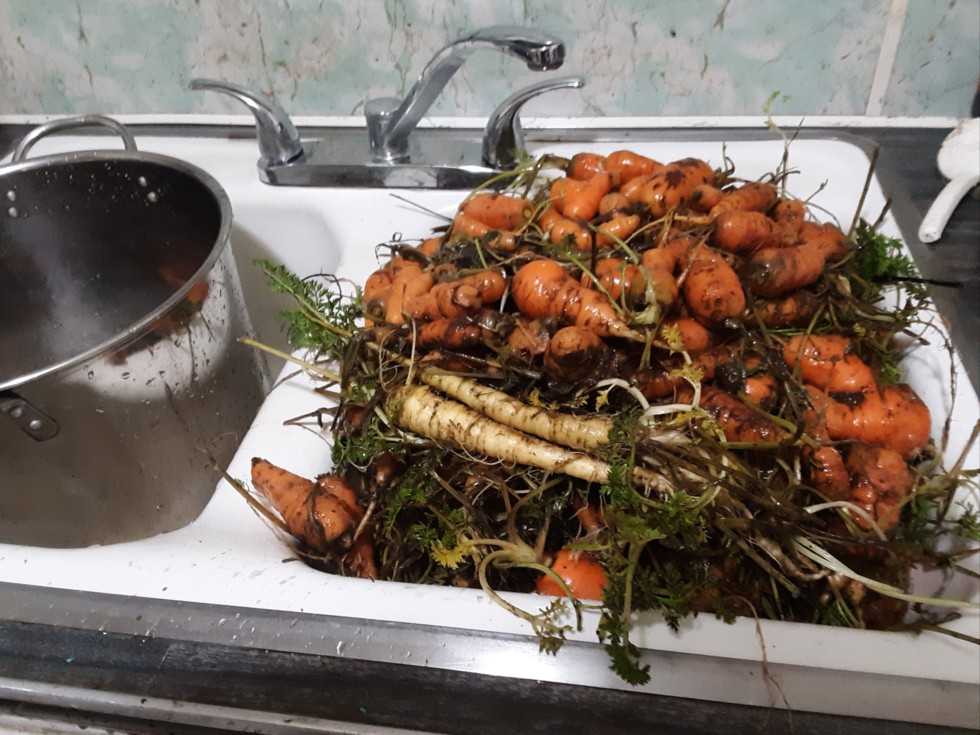| |
|
Entry Date
|
Nick Name
|
Location
|
|
Sunday, February 25, 2024
|

|
Little Ketchup
|
Grittyville, WA
|
 |
Entry 13 of 265 |
 |
|
|
|
A few white "carrots" showed up. I must have mixed in some leftover giant parsnip seed.
If you're up for struggling through my poor writing, half my neurons arent functioning sorry! But here it goes:
How a companion plant can help your pumpkin results? Here's a mini dive into giving your plant a helpful companion.
Last year I planted a giant tomato in the rear of where my pumpkin plant was planted. Only a couple feet separated the two plants. Initially, the tomato plant outperformed my other tomato plants, having bigger stems and blossoms, probably because of all the organics and nitrogen I put there for the pumpkin. But then it struggled to set fruit and grow fruit of any significance. So it was like, "Uh-oh... If this soil wont grow even an ordinary sized tomato, how is it going to grow a giant pumpkin?" It was clear there was a problem with the soil, and because it was a conpanion to my giant pumpkin, it was also the same soil that was feeding my giant pumpkin. So that was a stark warning to me that I might not get what I was hoping for pumpkin-wise. Looking back, I think that mid-season 'caution sign' was part of what helped me grow a larger pumpkin last year. Because of what this tomato plant was telling me.
I think what the tomato plant was saying was the nitrogen and potassium and phosphorus were all great, but maybe the zinc, boron, and calcium were not so great. It was still guesswork, but it helped cut the guesswork in half, to see the tomato plant displaying weak fruitset. It really clued me in to the fact that my pumpkin plant was probably going to produce a half-sized pumpkin because what was affecting the tomato plant presumably would affect the pumpkin, again because they were both eating from the same dirt. The changes I made to the fertilizer regimen were unfortunately not in time to save any of the large tomato blossoms, but I do think those changes did help the pumpkin.
Anyhow, I will try companion planting again (someday) for this reason. It gives the grower different observations to utilize, and it can make patch decisions easier. I like that the right companion plants can give preemptive warnings or second opinions...
I'm considering using some jerusalem artichokes as "living moisture meters" because I think they will complain about low soil moisture before a pumpkin plant will.
I know this companion planting thing is just a boring side topic to most growers but I like it. I am open to further ideas.
|
|
|



